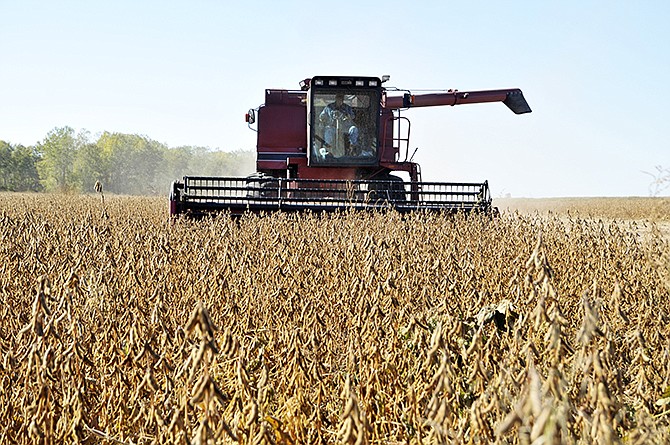Missouri farmers face a volatile situation in which revenues may decline and expenses remain high, an expert from the University of Missouri said.
Scott Brown, director of strategic partnerships for the University of Missouri's College of Agriculture, Food and Natural Resources, testified Wednesday before the Joint Committee on Agriculture during its first hearing since the end of the legislative session in May.
The committee, a bipartisan group of five senators and five representatives, was established to study agricultural policy effects on the state's economy and environmental stewardship, among other areas.
"Having done this kind of outlook stuff for a long time, I certainly look forward to the days when we can get back to how much supply changes, really, is what affects prices instead of all these extraneous factors that we just haven't seen before that have been such big drivers," Brown testified.
Inefficient supply chains, the COVID-19 pandemic and the Russian invasion of Ukraine, as well as global trade policies and animal disease outbreaks, are all factors contributing to unstable agricultural markets, Brown said.
Farm prices are generally high across the board right now, he said, but expenses are also high.
"We have both sides that have moved up substantially," Brown said. "And to me that adds a lot more risk to the bottom line of a lot of producers."
Farmers and producers have been pushing record food prices at consumers and Brown said they may go higher in some industries.
He said low-income consumers might struggle to afford rising food prices as certain agricultural industries, such as the cattle industry, fall short on supply.
More than 90,000 cattle were lost from 2021-22, Brown said, which was the result of drought and farmers moving from livestock to crops for greater revenue.
According to the U.S. Department of Agriculture, income for American farmers almost reached record-breaking levels in 2021. The federal agency is projecting a decline in 2022, but Brown said it should still be "a good year."
Those revenues have helped offset rising expenses farmers face as more dollars are required for farms to produce similar financial returns.
"If revenues move lower, we're going to find ourselves in a very tough financial situation here in Missouri for producers, for farmers across the state," he said. "And I think we want to be prepared for that. I hope it doesn't occur, but I continue to be worried about the cost squeeze many of our folks can get in."
Brown said agriculture in Missouri is going to depend more and more on what happens internationally, which is an opportunity for both growth and more volatility.
Supply chain disruptions aren't clearing up anytime soon, and the economic effects of the COVID-19 pandemic are still active, he said.
Disease has also been a factor on agricultural trade.
U.S. pork exports to China rose in 2021 as the country battled African swine fever. And cattle markets have received an economic lift as China continues shutdowns to combat COVID-19. Corn and soybean exports are also strong, Brown said.
Agricultural exports from Missouri declined when countries imposed tariffs in recent years. As the U.S. depends more on global markets, Brown said, stronger open trade policies are crucial.
"You might get lucky in hitting that home run, but sometimes you also might get unlucky and strike out trying to hit that home run," he said. "And I think that's what we face today, just the volatile role that we see today."
Other factors Brown said to watch are the value of the American dollar, oil prices and disposable income of Americans.
Disposable income isn't expected to grow this year, but spending is at 10 percent, which Brown said means more credit card use.
"Those things can't continue forever, and if U.S. consumers have less money in their pockets, do they consume less food? Do they consume less (agriculture) products?" Brown asked. "We have to be paying attention to that."

